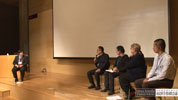環境省記者クラブと外国人記者クラブで記者会見
福島第一原発事故被災者に対する放射線防護対策への提言
第6回市民科学者国際会議「結論」と「低線量電離放射線被ばくのリスクに関する二本松宣言」
市民科学者国際会議では、3月13日に環境省、復興庁、原子力規制委員会ならびに福島県に対して第6回市民科学者国際会議で合意した2つの文書(詳しくはこのページの後半部分をご覧ください)を提言書として提出しました。
これらの提言について、3月13日に環境省記者クラブで、また3月15日に外国人記者クラブにおいて記者会見を行ないました。
環境省記者クラブでの記者会見
IWJ Independent Web Journalより引用:IWJ Webサイトの記事はこちら→ http://iwj.co.jp/wj/open/archives/368294
Press Conference at Foreign Correspondents Club of Japan
Recommendations by International Independent Experts for Current Radiation Protection Measures to the Fukushima Nuclear Accident Victims
CSRP held a press conference on the “Conclusion” of the 6th Citizen-Scientist International Symposium on Radiation Protection and “The Nihonmatsu Declaration on the Risks of Exposure to Low Doses of Ionizing Radiation” (see below for more details) at the Foreign Correspondent’ Club of Japan on Wednesday, March 15, 2017. The speakers of the press conference were :
- Cécile Asanuma-Brice: President of CSRP / Vice-director, North Asia Office, National Center for Scientific Research (CNRS), France
- Nanako Shimizu: Associate Professor, Faculty of International Studies, Utsunomiya University
- Keith Baverstock: Department of Environmental Science, University of Eastern Finland (via Skype)
第6回 市民科学者国際会議「結論」と「低線量電離放射線被ばくのリスクに関する二本松宣言」を公表
(English version below)
福島第一原発事故から6年。甲状腺がんや低線量被ばく、指定避難区域の解除などの避難住民政策は、福島県内だけでなく、放射能で汚染された広範な地域に住む住民の多くに今なお不安を与え続けています。
特定非営利活動法人 市民科学者国際会議は、去る2016年10月7~10日、福島県二本松市で、「第6回 市民科学者国際会議 —— チェルノブイリと福島の現実から」を開催しました。会議では、利益相反のない、独立の立場で研究・実践活動を行っている内外の専門家14人が「低線量放射線の疫学」と「原発事故後の言葉、法、倫理」を主要テーマに、研究発表と被災者・市民を交えた円卓会議を行ないました。
会議後、参加者は、4日間にわたる議論に基づいて、福島第一原発事故被災者に対して今日行われている支援対策の検証とそれに対する提言を示した「結論」と、20ミリシーベルト以下の地域への帰還政策などの放射線防護対策に対する科学者の見解を表明した「低線量電離放射線被ばくのリスクに関する二本松宣言」をまとめました(両文書は雑誌「科学」(岩波書店)2017年3月号に掲載)。これらの文書は環境省、復興庁、原子力規制庁ならびに福島県に提出するとともに、その後環境省記者クラブと外国人記者クラブ(FCCJ)で記者会見を行いました(上記)。
CSRP publishes the “Conclusion” of the 6th Citizen-Scientist International Symposium on Radiation Protection and “The Nihonmatsu Declaration on the Risks of Exposure to Low Doses of Ionizing Radiation”
Six years after the accident at the Fukushima Daiichi Nuclear Power Station, thyroid cancer, low dose radiation, the refuge policy and the decision to reopen a part of the evacuation zone in this context have become an issue of concern mainly for the residents of Fukushima but also for all who are living in contaminating area outside this Prefecture.
The Citizen-Scientist International Symposium on Radiation Protection (CSRP), a non-profit organization based in Tokyo, has published two recommendations reports signed by international experts belonging to scientific organizations from all over the world (Finland, France, Switzerland, Ukraine, Australia, Germany, Taiwan, Japan) addressed to Japanese administrative authorities in charge of risk communication and radiation protection measures in the area affected by radioactive materials released from the Fukushima Daiichi Nuclear Power Plant.
Fourteen independent experts from inside and outside of Japan participated at the 6th Citizen-Scientist International Symposium on Radiation Protection, held from October 7 to October 10, 2016, in Nihonmatsu, Fukushima prefecture, in order to present their latest research. Over three days, they exchanged opinions on the themes of “Epidemiology of low-dose radiation” and “Discourses, laws and ethics after the nuclear power plant accident.” They compiled their propositions in two recommendations text they signed, based on discussions they had during the symposium, but also on findings and numerous study reports published after Chernobyl and Fukushima.
The first recommendation agreement, “Conclusion” of the 6th CSRP, take a critical look at risk communication currently conducted by the Japanese authorities, and listed up 6 recommendations deemed indispensable from the victims’ viewpoint.
The second recommendation agreement, entitled “The Nihonmatsu Declaration on the Risks of Exposure to Low Doses of Ionizing Radiation,” uses the “linear non-threshold (LNT) model” based on the latest scientific findings demonstrating scientific impertinence and lack of political wisdom of the present return policy for the evacuees to areas below 20 millisievert per year.
The Japanese version of these two recommendation reports were published in the March 2016 issue of Science Magazine “Kagaku (Science),” and the electronic English version on its special website.
CSRP has transmitted these recommendations agreement to Minister of the Environment, Director General of Reconstruction Agency, Chairman of Nuclear Regulation Authority and the Governor of Fukushima Prefecture, and held press conferences for Japanese journalists and foreign correspondents in Japan (see above).
CSRP 2016
第6回 市民科学者国際会議
Archived Videos / アーカイブ映像
Keynote lecture
基調講演
-

Seventy years of denial How Artificial Radioactivity harms Nature
70年続く否定-人工放射能は自然に対しどのように有害か-
-
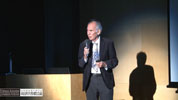
Darwinism is discredited but was Darwin right?
ダーウィン主義が信用をなくしているが、そもそもダーウィンは正しかったのか?
【Session 1 Low-dose radiation epidemiology】
【セッション1 低線量放射線の疫学】
-
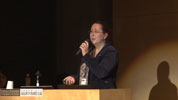
The International Nuclear Worker Study (INWORKS): improving knowledge on cancer mortality risk from low-dose exposure to ionizing radiation
原子力施設労働者国際研究プログラム(INWORKS)―低線量の電離放射線被ばくによるがん死亡リスクについての知識の向上―
-
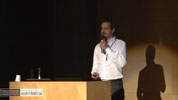
Background Ionizing Radiation and the Risk of Childhood Cancer – Results from Recent Studies
バックグラウンド電離放射線と小児がんのリスク
-
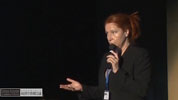
Modern approaches for woman and children health protection from consequences of radiation accidents
放射能事故の影響から女性と子どもの健康をまもるための近代的アプローチ
Round-table 1. Low-dose radiation exposure and tasks for public health
円卓会議 1. 低線量被曝と公衆衛生の課題
-

The Questions of CSIJ and Replies of IAEA concerning the IAEA Director General's Report on the TEPCO Fukushima Daiichi Accident
東電福島第一原子力発電所事故に関する国際原子力機関IAEA事務局長報告書への質問(市民研)と回答(IAEA)
-

Recent events concerning the thyroid ultrasound screening for the Fukushima Health Management Survey by the Fukushima prefectural government
福島県県民健康調査甲状腺超音波検診における最近の動き
-
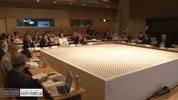
【Session 2 Discourses, laws and ethics after nuclear plant accident】
【セッション 2 原発事故後の言葉、法、倫理】
-

Crisis Surrounding the Right to Health of the Fukushima Nuclear Disaster Victims : A Report from Tochigi Prefecture
原発事故被災者の健康に対する権利とその危機的状況―栃木県からの報告―
-

Fukushima nuclear plant : Time for an end to the End Of Times
福島第一原発:時の終わりに抗する終わりの時
-

Social Abuse caused by Structural Violence: Scientific Proofs of Mental Health Impact of the Fukushima Nuclear Disaster
構造的暴力による社会的虐待:福島原発事故がもたらした精神的被害に関する実証的研究
【Session 3 The arts after the nuclear catastrophe -Between Art and Science-】
【Session 3 原子力災害後のアート ~科学と芸術の狭間~】
Round-table 2. Low-dose radiation exposure and tasks for public health
円卓会議 2. 原発事故後の公衆衛生の枠組み
-
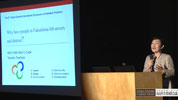
Why have people in Fukushima felt anxiety and distrust?
何が人々に不安と不信をもたらしているのか
-
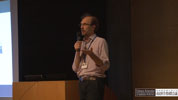
Radiation low dose seen by the nuclear governance, its Critic and Nuclear Workers
原子力のガバナンスが見た低線量放射線、それに対する批判、そして原発労働者
-
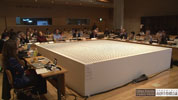
Round-table discussion 3 and wrap-up
円卓会議とまとめ
Topic
気になるトピック
福島県内仮設住宅居住者にみられる 高い心的外傷後ストレス症状 一 原子力発電所事故がもたらした身体・心理・社会的影響一 / High-level Post-traumatic Stress Symptoms of the Residents in Fukushima Temporary Housing: Bio-psycho-social lmpacts by Nuclear Power Plant Disaster
辻内琢也/小牧久見子/岩垣穂大/増田和高/山口摩弥/福田千加子/石川則子/持田隆平/小島隆矢/根ヶ山光一/扇原 淳/熊野宏昭 抄録:本研究は,東日本大震災に伴って発生した福島原子力発電所事故の2年後に,福島県内の 仮設住宅において避難生活を送る住民の心的外傷後 … Read More
Now in Fukushima
福島はいま
Cases of thyroid cancer up among Fukushima kids in 2nd screening: prefectural panel
FUKUSHIMA — In its second round of health exams for residents who were 18 years old or younger at the time of the March 2011 … Read More
Article Categories
記事カテゴリ
- By Author / 著者別
- ABE Masafumi / 阿部正文
- ADACHI Kouji / 足立光司
- AKIMOTO Shin-ichi / 秋元信一
- ASANUMA-BRICE Cécile
- BAVERSTOCK Keith
- BRENNER David J.
- BROWN Kate
- CARDIS Elizabeth
- CLEVELAND Kyle
- DOLL Richard
- FAIRLIE Ian
- FURUKAWA Kyoji / 古川恭治
- GARNIER-LAPLACE Jacqueline
- GIBNEY Elizabeth
- GODDARD Ian
- GOTO Shinobu / 後藤 忍
- GRECH Victor
- GROVER Anand
- HAYAMA Shin-ichi / 羽山伸一
- HAYASHI Mamoru / 林衛
- HAYASHIDA Naomi / 林田直美
- HESSE-HONEGGER Cornelia
- HINO Kousuke / 日野行介
- HIRANUMA Yuri / 平沼百合
- HIYAMA Atsuki / 檜山充樹
- HONDA Kouya / 本田 孝也
- HONDA Masakazu / 本田雅和
- IGARASHI Yasuhito / 五十嵐康人
- IGARASHI Yasushito / 五十嵐康人
- IMANAKA Tetsuji / 今中哲二
- JACOB Peter
- JOBIN Paul
- KAKIHARA Yasushi / 柿原泰
- KASUGA Fumiko / 春日文子
- KENDALL G.M.
- KITAHARA Cari M.
- KOERBLEIN Alfred
- KOIZUMI Akio / 小泉昭夫
- KOMORIDA Akio / 小森田秋夫
- KURIHARA Osamu / 栗原治
- LEURAUD Klevi
- MATHEWS John D
- MERZ Stefan
- MOUSSEAU Timothy A.
- MØLLER Anders P.
- MURASE Kaori / 村瀬香
- NAGATAKI Shigenobu / 長瀧重信
- NAKACHI Shigeharu / 中地重晴
- NOHARA Chiyo / 野原千代
- OCHIAI Kazuhiko / 落合和彦
- OIWA Yuri / 大岩ゆり
- OTAKI Joji / 大瀧丈二
- OZASA Kotaro / 小笹晃太郎
- PEARCE Mark S.
- RIBAULT Nadine
- RIBAULT Thierry
- RICHARDSON David
- SCHERB Hagen
- SEGAWA Yoshiyuki / 瀬川嘉之
- SHIBUYA Kenji / 渋谷健司
- SHIMAZONO Susumu / 島薗進
- SHOZUGAWA Kataumi / 小豆川勝美
- SMEESTERS Patrick
- SMITH John N.
- SPYCHER Ben D.
- SUZUKI Satoru / 鈴木悟
- TAKAMURA Noboru / 高村昇
- TSUDA Toshihide / 津田敏秀
- TSUGANE Shoichiro / 津金昌一郎
- TSUJIUCHI Takuya / 辻内琢也
- TSURUTA Haruo / 鶴田治雄
- WAKEFORD Richard
- WATANABE Yoshito / 渡辺嘉人
- WERTELECKI W
- WILLIAMS Dillwyn
- WILLIAMSON Piers
- WING Steve
- WON Hee Lee
- YABLOKOV Alexey
- YAMASHIKI Yosuke / 山敷 庸亮
- YAMASHITA Shunichi / 山下俊一
- YASUMURA Seiji / 安村誠司
- By Document Types / 資料種別
- By Organization / 機関別
- Agency for Toxic Substances and Disease Registry / ATSDR / 毒物・疾病登録局
- ARCH / Agenda for Research on Chernobyl Health
- Atmosphere and Ocean Research Institute
- Atmosphere and Ocean Research Institute / 大気海洋研究所
- Center for Disease Control and Prevention / CDC / アメリカ合衆国疾病管理予防センター
- Center for the Promotion of Disarmament and Non-Proliferation / 日本国際問題研究所 軍縮・不拡散促進センター
- Centre national de la recherche scientifique / CNRS / フランス国立科学研究センター
- CEREA / Centre d'Enseignement et de Recherche en Environnement Atmosphérique
- Citizen's Science Initiative Japan / 市民科学研究室
- Clearing House for Disclosure of Information / 情報公開クリアリングハウス
- Committee to Assess Health Risks from Exposure to Low Levels of Ionizing Radiation / 低線量電離放射線被曝による健康リスク評価委員会
- CRIIRAD / Commission de recherche et d'information indépendantes sur la radioactivité
- CSRP / Citizen-Scientist International Symposium on Radiation Protection / 市民科学者国際会議
- Dose Assessment and Recording Working Group
- European Commission / EC / 欧州委員会
- Expert Meeting on Health Management After the Fukushima Daiichi Nuclear Accident, Ministry of the Environment / 東京電力福島第一原子力発電所事故に伴う住民の健康管理のあり方に関する専門家会議
- FCT / 福島中央テレビ
- Fuji News Network / フジニュースネットワーク
- Fukushima Global Medical Science Center / ふくしま国際医療科学センター
- Fukushima Medical University / 福島県立医科大学
- Fukushima Radiation and Health / 放射線医学県民健康管理センター
- Fukushima-Minpo / 福島民報
- German Society for Radiation Protection / ドイツ放射線防護協会
- GREENPEACE / グリーンピース
- Human Rights Council / 国連人権理事会
- Human Rights Now / 認定NPO法人 ヒューマンライツ・ナウ
- IAEA / International Atomic Energy Agency / 国際原子力機関
- ICRP / International Commission on Radiological Protection / 国際放射線防護委員会
- Institut für Sozial- und Präventivmedizin / ISPM / ベルン大学社会予防医学研究所
- International Center of Environmental Comparative Law / 比較環境法国際センター
- International Society for Environmental Epidemiology / ISEE / 国際環境疫学会
- International society for environmental epidemiology / 国際環境疫学会
- IPPNW / International Physicians for the Prevention of Nuclear War / 核戦争防止国際医師会議
- IRSN / L'Institut de Radioprotection et de Sûreté Nucléaire / フランス放射線防護原子力安全研究所
- Japan Chemical Analysis Center / 日本分析センター
- Japan Medical Association / 日本医師会
- Japan Thyroid Association / 日本甲状腺学会
- JSNM / THE JAPANESE SOCIETY OF NUCLEAR MEDICINE / 日本核医学会
- KAHOKU SHIMPO PUBLISHING CO. / 河北新報
- Kyodo news / 共同通信
- Kyoto University / 京都大学
- Kyoto University Research Reactor Institute / KURRI / 京都大学原子炉実験所
- Mainichi Newspapers / 毎日新聞
- Meteorological Research Institute / 気象庁気象研究所
- Meteorological Research Institute / 気象研究所
- Ministry of Economy, Trade and Industry / 経済産業省
- Ministry of Education Culture Sports Science and Technology / 文部科学省
- Ministry of Environment / 環境省
- Ministry of Health Labour and Welfare / 厚生労働省
- Nagasaki University / 長崎大学
- NAIIC / The National Diet of Japan Fukushima Nuclear Accident Independent Investigation Commission / 国会 東京電力福島原子力発電所事故調査委員会
- National Academy of Sciences / 米国科学アカデミー
- National Cancer Institute (NCI) / 米国国立癌研究所
- National Institute for Environmental Studies / 国立環境研究所
- National Institute of Radiological Sciences / NIRS / 放射線医学総合研究所
- Nature
- NHK / 日本放送協会
- Nikkei Inc.
- Nippon Foundation / 日本財団
- Nippon Veterinary and Life Science University / 日本獣医生命科学大学
- Nuclear Regulation Authority / 原子力規制委員会
- Nuclear Safety Research Association / 原子力安全研究協会
- Okayama university / 岡山大学
- Operation Tomodachi Registry
- OurPlanet TV
- Physicians for Social Responsibility / PSR / 社会的責任を果たすための医師団
- Radiation Effects Research Foundation / RERF / 放射線影響研究所
- Radiation Medical Science Center for the Fukushima Health Management Survey / 放射線医学県民健康管理センター
- SAFLAN / Save Fukushima Children Lawyers' Netwaork / 福島の子どもたちを守る法律家ネットワーク
- Science Council of Japan / 日本学術会議
- Social science / 社会科学
- Stanford University
- Strahlentelex / 放射線テレックス
- Swiss National Cohort Study Group
- Swiss Pediatric Oncology Group
- SWISSINFO.CH
- TEPCO / 東京電力
- The Asahi Shimbun Company / 朝日新聞
- The Fukushima Minyu Shimbun / 福島民友
- the Government of Japan / 日本政府
- The Telegraph
- The Wall Street Journal
- The Yomiuri Shimbun / 読売新聞
- Tokyo Metropolitan University / 首都大学東京
- Tokyo Newspaper / 東京新聞
- U.S. Department of Defense / 国防総省
- University of Limoges, CRIDEAU- OMIJ / リモージュ大学 環境法・土地利用・都市開発学際研究センター
- University of the Ryukyus / 琉球大学
- UNSCEAR / United Nations Scientific Committee on the Effects of Atomic Radiation / 原子放射線の影響に関する国連科学委員会
- Waseda University Great East Japan Earthquake Reconstruction Support Legal Work Project / 早稲田大学東日本大震災復興支援法務プロジェクト
- WHO / World Health Organization / 世界保健機関
- 福島大学
- By Subject / 分野別
- Atmospheric chemistry / 大気化学
- Biology / 生物学
- Congenital anomaly / 先天性異常
- Dose Evaluation / 線量評価
- Ecological epidemiology / 生態疫学
- Emergency response / 緊急時対応
- Environmental Contamination / 環境汚染
- Environmental epidemiology / 環境疫学
- Epidemiology / 疫学
- Food and Agriculture / 食と農
- Health Management Survey / 健康管理調査
- Hiroshima-Nagasaki / ヒロシマ・ナガサキ
- Information disaster / 情報災害
- Laws and Rights / 法と権利
- Low dose exposure / 低線量被曝
- Measurement / 測定
- Medical Anthoropology / 医療人類学
- Medical Anthropology / 医療人類学
- Medical Care / 医療
- Medical exposure / 医療被曝
- Morphology / 形態学
- Natural Radiation / 自然放射線
- Oceanography / 海洋学
- Pathognomy / 診断学
- Perinatal care / 周産期医療
- Physics / 物理
- Public Health / 公衆衛生
- Radiation Protection / 放射線防護
- Radioecology / 放射線生態学
- Radiology / 放射線学
- Risk Communication / リスク・コミュニケーション
- Science, technology and society / 科学技術社会論
- Social Science / 社会科学
- TEPCO Fukushima Daiichi Nuclear Plant / 東京電力福島第一原子力発電所
- Thyroid / 甲状腺
- CSRP Symposium 2013
- CSRP Symposium 2014
- CSRP2015
- gaming
- Information / お知らせ
- Miscellaneous / その他
- New Findings / 新たな知見
- Now in Fukushima / 福島はいま
- pskcasino-hr
- Publication / 出版物
- Related Documents / 関連資料
- shuffle
- Topic / 気になるトピック
- weissbet

